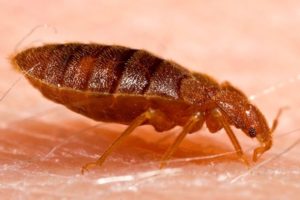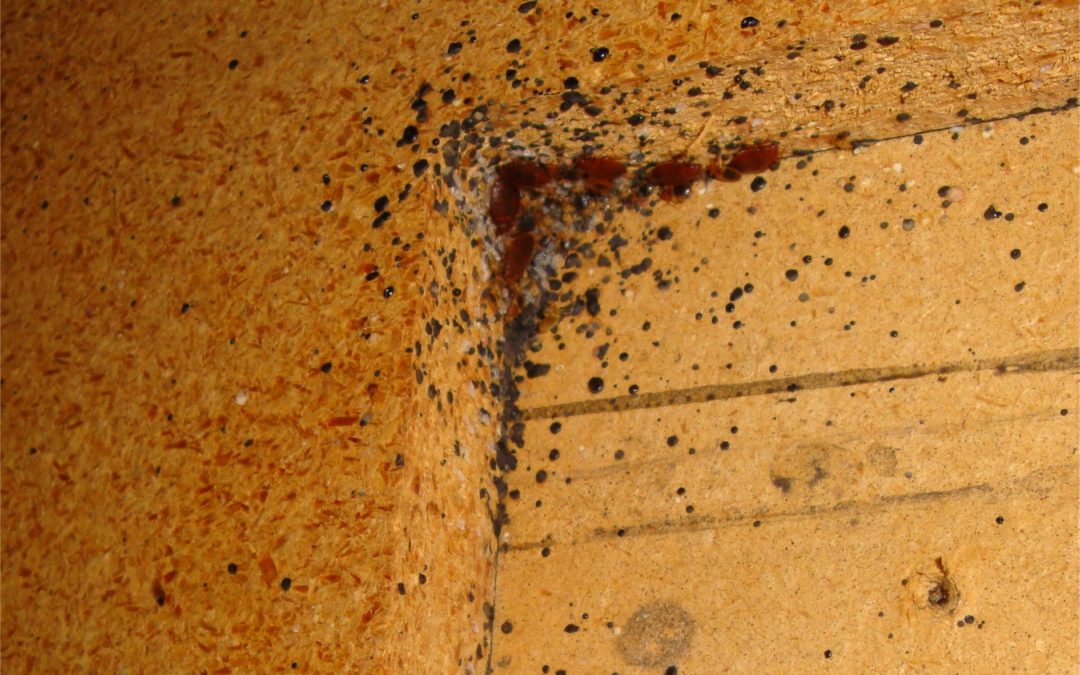Bed bugs are small, oval, brownish insects about the size of an apple seed. They don’t have wings, making them unable to fly, but move swiftly over ceilings, walls, and floors. Females can lay hundreds of eggs at a time over their lifetime making it difficult to get rid of them. Bed bugs live off of blood from humans and animals. Which causes them to swell and go from brownish to reddish in color. When they bite, they leave behind itchy, red spots.
These sneaky insects make their way inside any way they can. It is easy for them to stow away in luggage, used beds and furniture, and clothes. Their small, flat bodies, as tiny as the width of a credit card. make it easy to hide in small spaces.
When a bed bug infestation is first introduced in the home, they prefer to hide in places where people are easily accessible. Bed bugs favor hiding in box springs, mattresses, bed frames, and headboards. They are nocturnal which makes people easy prey after they’ve gone to sleep.
After some time, bed bugs will spread around the home. They hide in small spaces and crevices including baseboards, wallpaper, electrical switch plates, and furniture upholstery. Being traveling insects, they can also temporarily survive in places like backpacks, luggage, and cars.
While they prefer coming out at night, they can also make appearances during the day. These opportunistic insects and don’t mind feasting while the sun is out when meal options available.
How to Identify a Bed Bug Infestation
Bed bug infestations may not be immediately evident. Bed bugs are visible to the naked eye but very difficult to detect. Adult bugs are the easiest to see because of their size and color. Nymphs, or juvenile bed bugs, are slightly harder to see, being much smaller in size and lighter in color. Their bodies are pale, eventually getting darker as they age. Bed bug eggs are clear or white, which makes them extremely hard to spot. Furthermore, they tend to be hidden in the smallest, tightest corners of the house.

Bed bugs can be hard to spot, making it difficult to prevent an infestation. Finding them is challenging because they are reclusive and tend to be nocturnal. Which means they emerge to feed while most people are asleep.
Feeling them crawling on the skin is unlikely, and their bites go undetected. This is due to their small mouthparts, superficial bite, and saliva containing anesthetic properties.
If there is a suspicion of an infestation in the home, immediately look for signs of infestation. A major sign of an infestation is waking up with red, itchy areas on the body. Further signs include dark spots caused by bed bugs’ excrement on sheets and mattresses, egg shells or dead, shed skin in possible hiding places, or small blood stains on bedsheets and pillowcases.
Getting Rid of Bed Bugs
Action should be taken as soon as possible after the discovery of a bed bug infestation. Begin with cleaning every area where they may be living. This includes washing items like bed linens, curtains, and clothing in very hot water. Also, vacuum all carpets and rugs while ridding of clutter. The surest way to make sure bed bugs are gone permanently is extermination.
Bed bugs tend to live in areas where harmful chemicals can be destructive. Which makes Cryonite the superior treatment due to its chemical-free technology. Cryonite’s patented process that converts liquid CO2 into a dry ice “snow” that is lethal to insects helping particles penetrate deep into small spaces, cracks, and crevices. Cryonite is fast, effective, and most importantly, non-toxic and non-allergenic.
Get rid of a bed bug infestation as soon as it started. A Cryonite system kills bed bugs and pest and keeps them out. Contact us today to see how easy it is to own and operate your own Cryonite system!

